This is the guide to the different types of dal or dried lentils commonly used in Indian cooking that you've been looking for! It will explain the differences between dals and which ones to use in various Indian dishes.
Jump to:
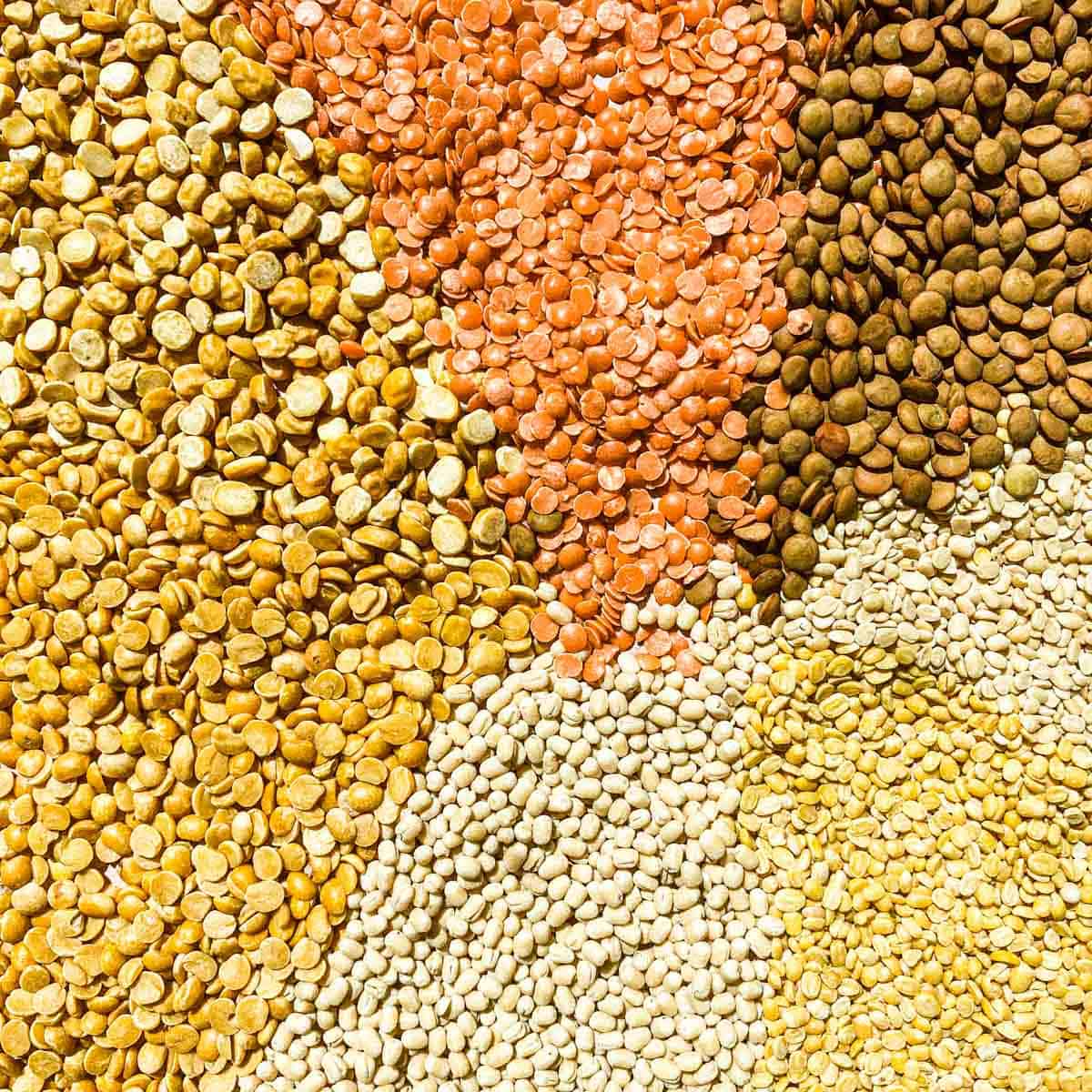
This blog post goes really deep into the different lentil varieties used in Indian cooking. However, if you are looking for a detailed how-to on cooking any type of dal then checkout this blog post.
Whole Dal vs Hulled Dal vs. Split Dal
Dal is a pulse or lentil that grows in pods. Whole dal are the lentils that are removed from their pods, dried, and sold whole, whereas split dal is split into thinner flatter discs. Whole dal can either have its skin on or off (shelled vs. non-shelled) whereas split dal is more commonly hulled.
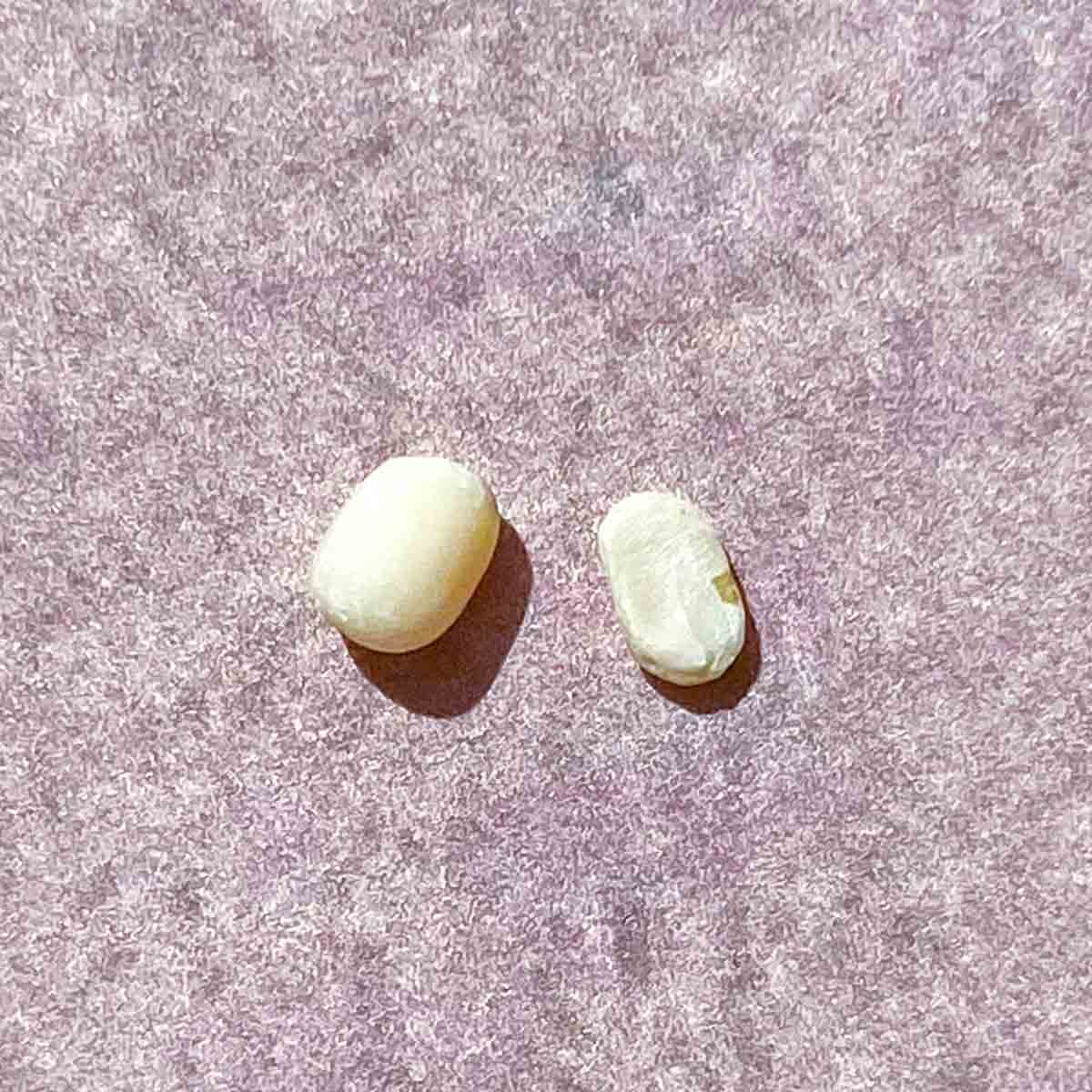
Most dal varieties can be sold both in whole or split varieties and choosing which one you want depends highly on the dish you are trying to create. There are three general rules when deciding whether to use whole dal vs. split dal.
- Use whole dal if you want the dal to retain its shape and split dal if you want a creamy dish - For example, when making a dish like dal makhani or lentils in a burger where the dal adds texture to the dish, use whole dal, whereas when making a spinach dal where the lentils should be silky and and dissolve, use split dal.
- Use split dal for temperings or tadkas - Split dal roasts faster in quick oil tempering resulting in a thin crunchy addition that imparts flavors to tadkas. Whole dals can simply not cook through in the time frame in which tadkas are made and would be hard to bite into.
- Use whole, skin off (shelled) dal for batters - For dosa, idli, and vada batters it is best to use whole urad dal that does not have the skin on it. The skin prevents the batter from becoming creamy and smooth, so it is best to avoid it. The whole dal is less dry compared to the split dal and therefore leads to a fluffier batter.
For an even more in-depth article checkout this blog post on how to cook any Indian dal.
Five Main Types Of Indian Dal
Masoor Dal
Masoor dal is often referred to as red lentils and is one of the best lentils for making a quick and creamy stovetop dal because of how thin it is compared to its counterparts.
Although the split version of masoor dal is often red or orange in color, in it's whole form, it is a brown/green color and therefore referred to as brown dal. Whole moong dal or French lentils are a great substitute for whole masoor dal. You can read more in depth about masoor dal and its use cases in this blog post.
 Buy Now →
Buy Now → 
Masoor Dal (Red Lentils) - Split
Buy Now →Moong Dal
Moong dal, also known as green gram, is green (as its moniker suggests) in its whole form and bright yellow in its split form. The split moong dal is comparable in thickness to split masoor dal and they are interchangeable when making creamy dal dishes like spinach dal.
The whole version of moong dal, aka whole green gram, on the other hand, is great when sprouted and incorporated into lentil salads. You can read more in depth about masoor dal in this blog post.
 Buy Now →
Buy Now →  Buy Now →
Buy Now →  Buy Now →
Buy Now → Urad Dal
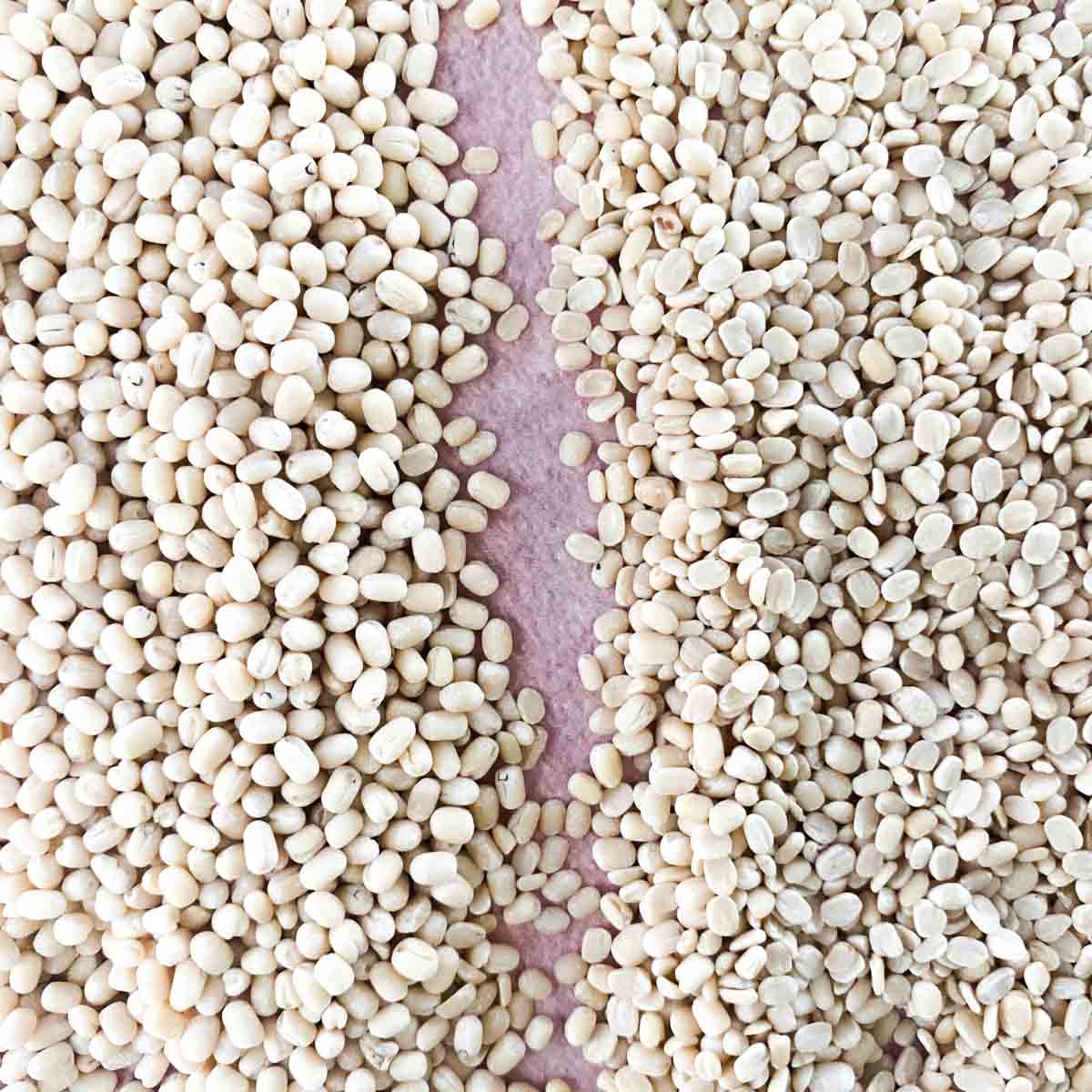
Urad dal, also known as black lentil, is a versatile dal that when whole and un-skinned is black in color and white otherwise. In its whole form, this dal is great in hefty dishes like dal makhani where the dal will retain its shape even after long cooking times.
The un-skinned whole urad dal, which is sold as urad gota, is white in color and great for making South Indian batters like dosa, idli, and vada.
Last but not least, the split version of urad dal is great to add in tempering or tadkas. The dal crisps up adding a nice crunch and adds a layer of nuttiness to the tadka. You can learn more about urad dal in this detailed blog post.
 Buy Now →
Buy Now → 
Urad Gota White (Whole, Hulled)
Buy Now → Buy Now →
Buy Now →  Buy Now →
Buy Now → Toor Dal
Toor dal, also known as pigeon peas, is a bright yellow color when split. It looks very similar to moong dal but is noticeably thicker. Split toor dal can be used in place of moong or masoor dal but should be soaked for at least 30 minutes to ensure even cooking.

Chana Dal
Chana dal is the split Indian chickpea called kala chana. It is high in protein and has a whiter hue compared to other yellow dals like toor dal. It is a hefty and thick dal that can be used to create a batter like in masala vada or in podis like sambar podi. You can learn more in depth about chana dal in this blog post.
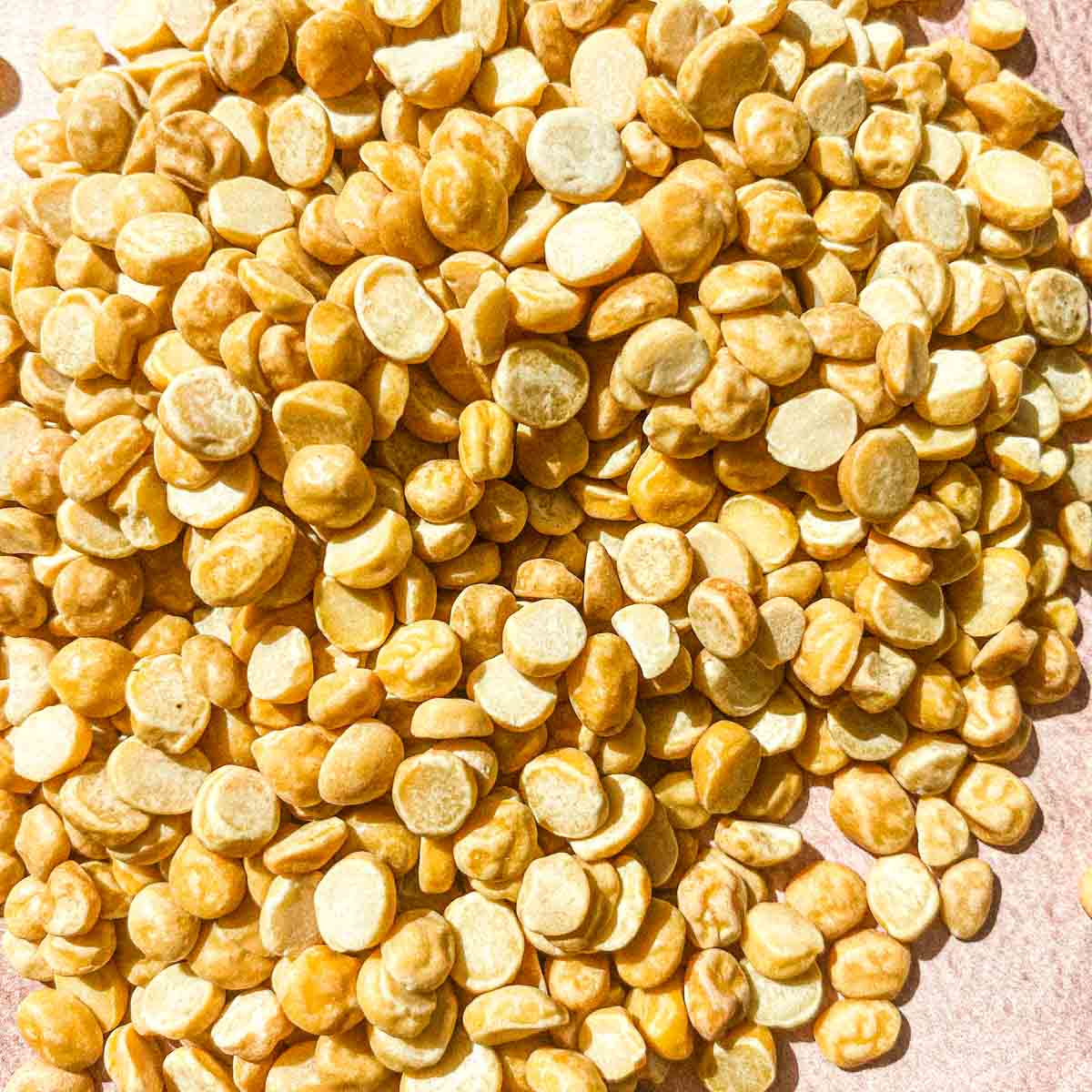
Dal Recipes that You Will Love
If you are looking for more details on how to master cooking dal, check out this in-depth guide to cooking any dal. It goes over choosing the right dal for your use case, soak times, and details the pros and cons of cooking using the pressure cooker vs. stovetop. These recipes down below are great ones which you can utilize to make dal, the dish.
These recipes use dal, the lentil, but make dishes that aren't categorized as dal!
Which Dals Are Best For Health?
All dals are great meat alternatives and are packed with anywhere between 8-12g of protein for every 50g. In general, dals that are whole have more fiber than their split counterparts. This is especially apparent in masoor dal which has more than 2x the amount of fiber in its whole form than its split form. Chana dal has the highest fat and lowest protein content compared to other pulses like masoor, moong, toor, and urad dal. You can choose the dal that meets your dietary macro needs to find the best one that is suited to you.
| Dal Type (50g) - Raw | Calories | Protein | Carb | Fiber | Fat |
| Masoor Dal - Whole | 180 | 12g | 30.4g | 14.4g | .5g |
| Masoor Dal - Split (Red lentil) | 190 | 12g | 33g | 7g | .5g |
| Moong Dal - Whole (green gram) | 180 | 9g | 31.5g | 8g | .5g |
| Moong Dal - Split | 170 | 12g | 31g | 6g | .7g |
| Toor Dal - Split (pigeon peas) | 175 | 11.8g | 32g | 7g | .5g |
| Urad Dal (black lentil) | 170 | 12g | 31.3 | 9g | .7g |
| Chana Dal (baby chickpea) | 190 | 8.5g | 21g | 6g | 2g |
Frequently Asked Questions
Masoor dal is a great substitute for moong dal. It is thin like the moong dal which makes it a great candidate for stove top cooking with no soaking needed.
Generally, thicker dals like urad dal and toor dal require soaking as they are thicker than their split dal varieties, whereas thinner dals like masoor dal and moong dal do not.
In general, whole dals have higher fiber than their split counterparts. Whole masoor dal has the highest fiber content when compared to moong, urad, toor, and chana dal.
Masoor, moong, toor, and urad dals have a high protein content with about 11-12g per 50g of dal compared to chana dal which has only 9g of protein per 50g of dal.


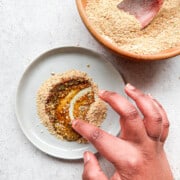
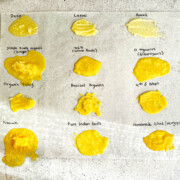
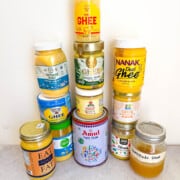
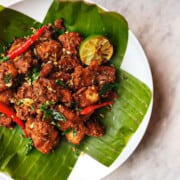
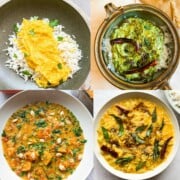
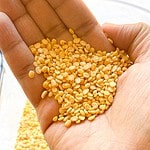
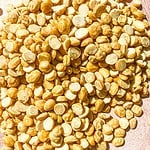
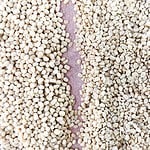
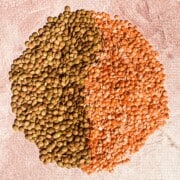
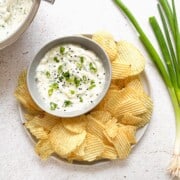
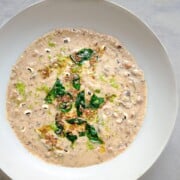
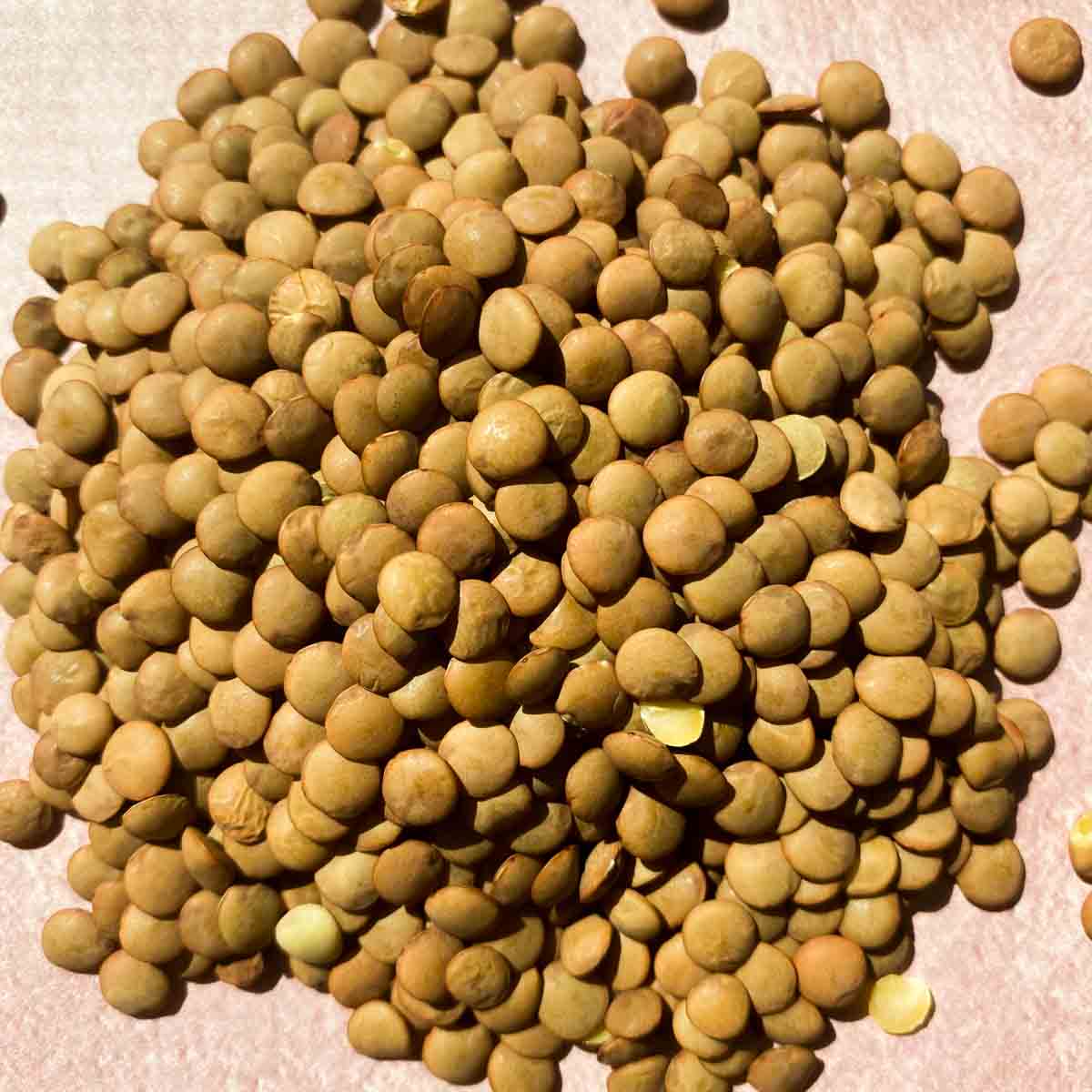
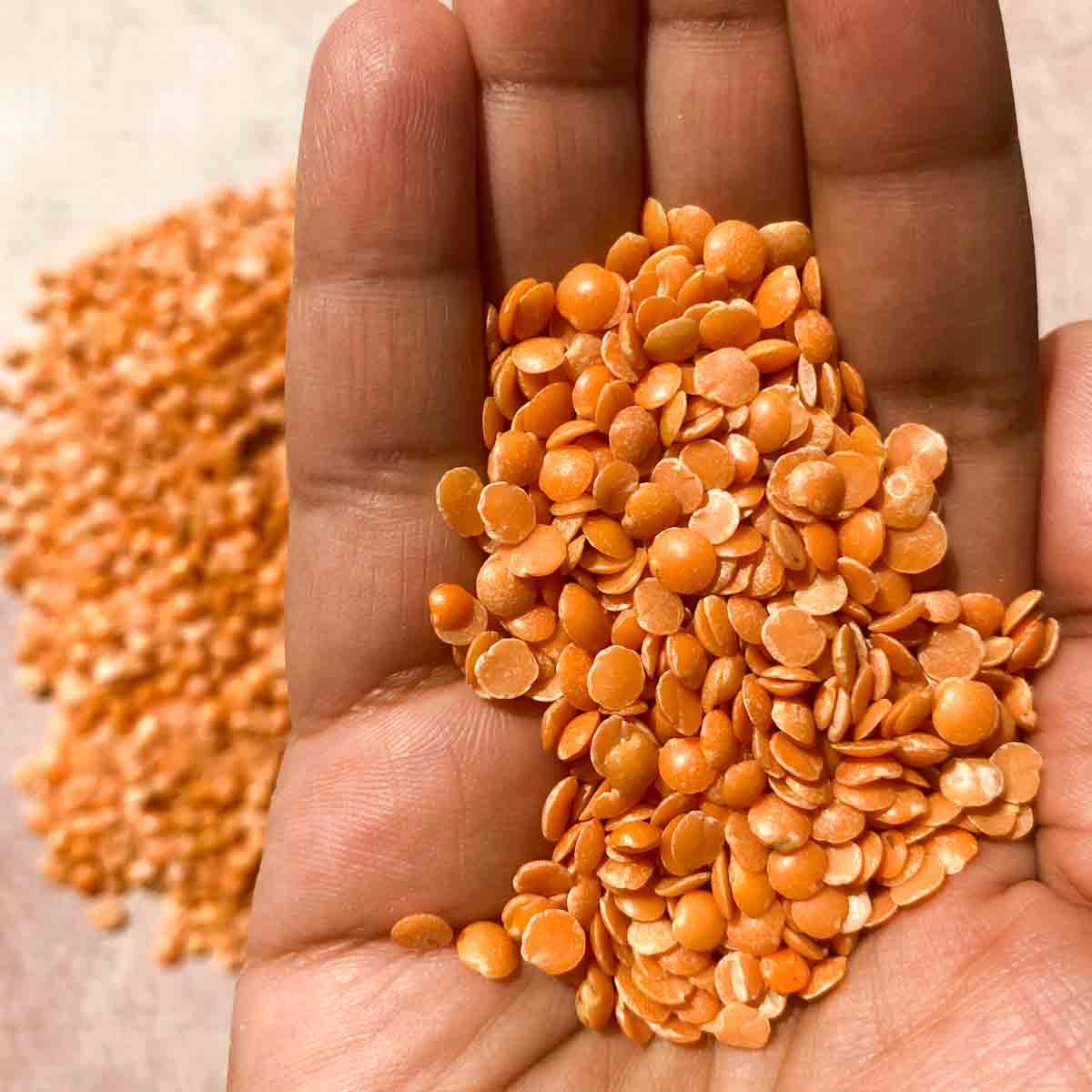
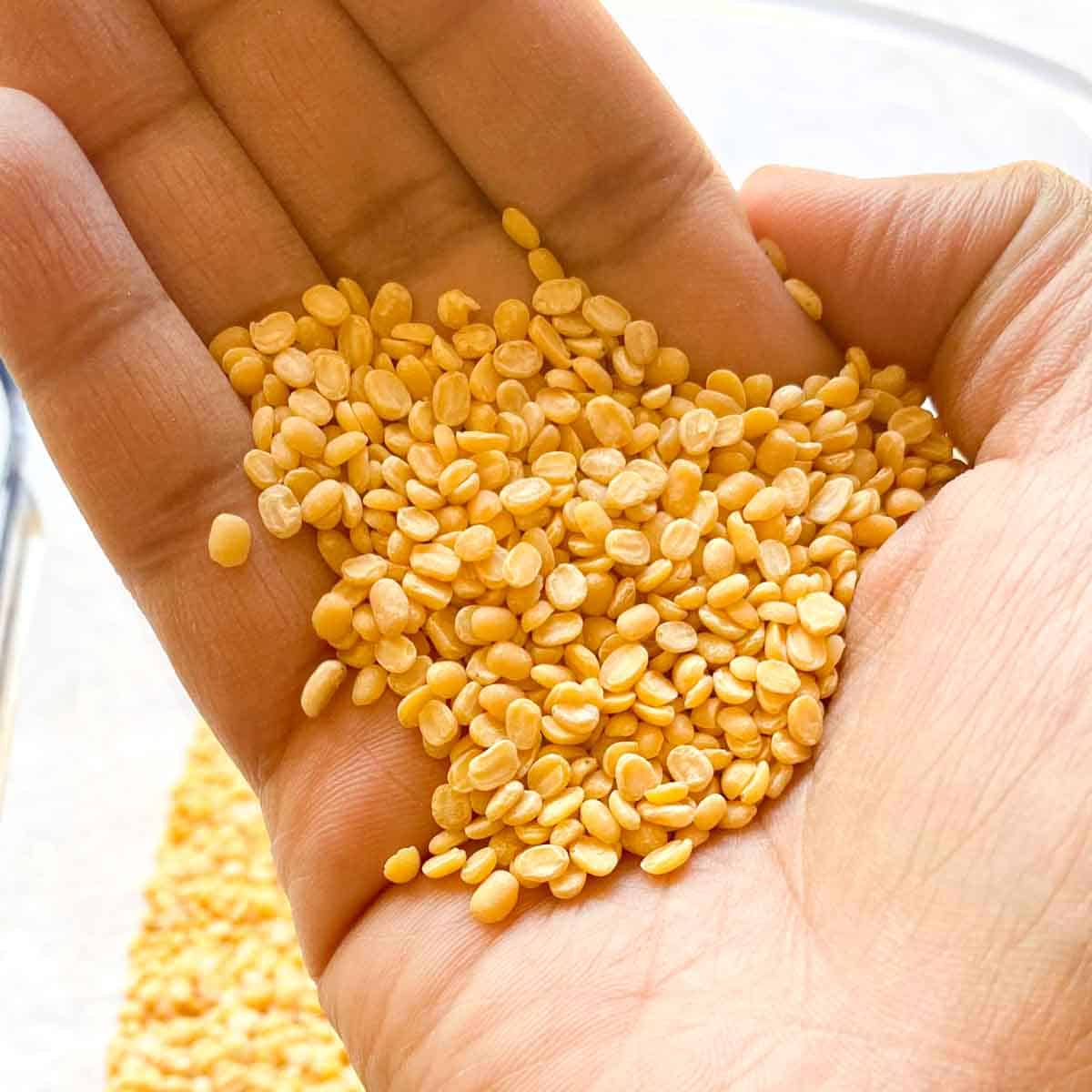
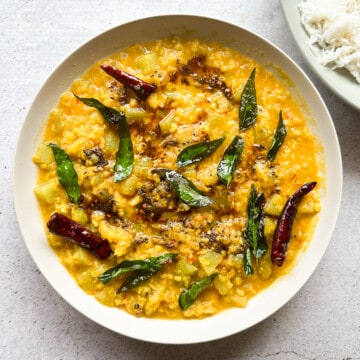
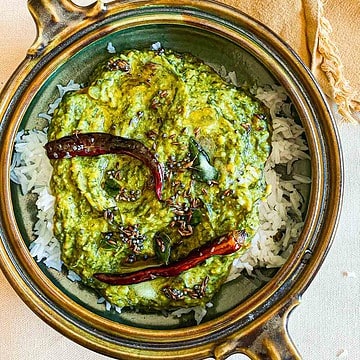
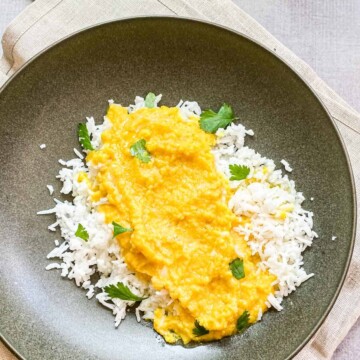
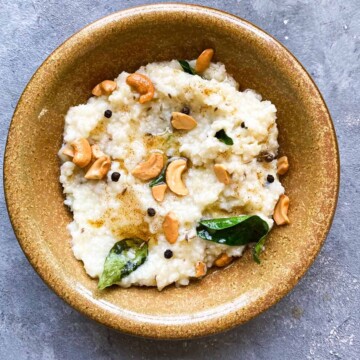
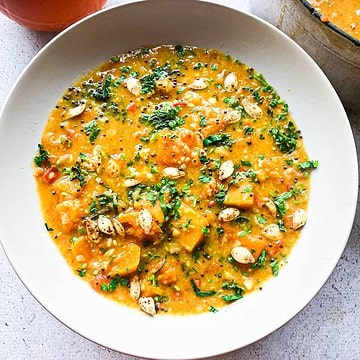
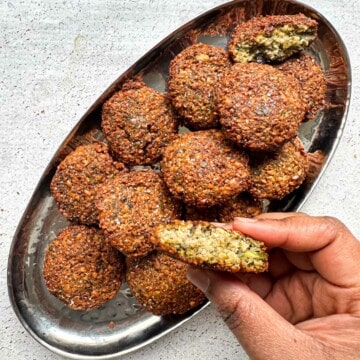
Amanda says
Thank you so much for this!
Lori says
Awesome info.
Ali says
Thank you I learned so much from this. 🙂
Shri Repp says
Yay! This makes me so happy to hear Ali! 🙂
Roy says
Thank you for the thorough explanation. I now have a clear understanding of the differences.
Shri Repp says
I'm so glad that this was informative 🙂
Suzn says
Huge help! Thanks for the explanation....plan to eat at least 5 times a week ...
Shri Repp says
I'm so glad that this was helpful 🙂
Tinny Sharma says
This is a very good information for beginners. thanks.
Shri Repp says
Yay! I'm so glad that this was helpful 🙂
Adnan Jabri says
Hi Mam ,
i M Adnan Jabri exporter of agri and pulses .Nice to see your website.i got good info .Nice Mam
Thanks
Marilyn Macdonald says
I am just starting to learn about the culinary art of cooking Indian cuisine. Your explanation about the dal varieties has been so helpful. I’ve always been intimidated at the thought of trying to learn to cook Indian food, but your article has eased my apprehension and given me a feeling of possibility! In other words, my first step into this unknown (by me) ocean has been pleasant and painless. Thank you!
Shri Repp says
This makes me so so happy to hear! I'm so excited for your adventures into Indian cooking 🙂
Carrie Wells says
Thank you. This was very informative!
Shri Repp says
I'm so glad that this was helpful 🙂